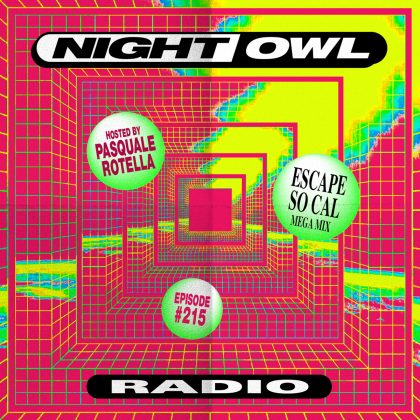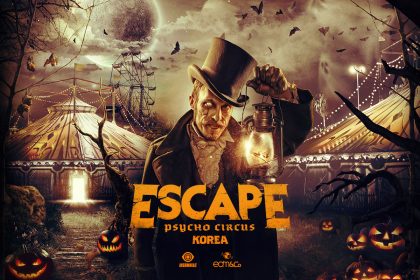We Reviewed the Best Bluetooth Speakers With Music From the Escape: Psycho Circus 2018 Artists
A great DJ set takes you on a journey, but there are also times when you’re headed out on a journey where you’ll need to play DJ. Maybe you’ve got tickets to a festival—like this weekend’s Escape: Psycho Circus 2018—and you’re getting people together as the energy builds up (or even chills out). You want to make sure your playlists match the immersive mood of the the largest Halloween dance music festival on the West Coast, so we handpicked some of the best portable, battery-powered Bluetooth speakers (and road-tested them with tunes from the Escape lineup) that can make sure the weekend never dies, even as you’re on the move.
The Warmup Set

The Libratone ZIPP ($299) is a cylindrical speaker named for its interchangeable, brightly hued cloth sleeves ($29 each) and their signature zipper closure (plus the whole easily-moved-in-a-zip concept). It’s a stylish accessory designed in Denmark that can blend into or stand out from any room. More importantly, it also comes equipped with all the codecs (streaming audio formats) you could want, ensuring music maintains a sense of clarity, regardless of the source device.
Imagine you’ve got a bunch of friends over before a party—some with iPhones, others Android devices. With the ZIPP, compatibility is not an issue. It offers the baseline lossy SBC format (as does every Bluetooth device in this article), and maintains a standard 30-foot connection reliably. However, connect the speaker to your Wi-Fi (or activate its ad hoc network), and iOS fans can use the uncompressed AirPlay protocol to make sure a deep, spacey tech house heater like Franky Rizardo’s “I’m Feelin’” keeps all its insistent throb and frayed edges intact.
Spotify Connect compatibility allows the speaker to pull songs directly off broadband, and a round touch panel on top controls play/pause/skip/volume, etc., freeing up your phone. If not taking advantage of Wi-Fi and its support of high-res 96 kHz/24 bit audio, compatible Android phones can connect with aptX, an almost “CD-like” Bluetooth format that brings out all the bass gradients on a track like Moody Good’s wobbly floater “Satoshi Nakamoto.” (Select Mac and PC computers can also take advantage of these options.)
A single 10-inch-tall ZIPP packs a 100-watt Class D amp, a 4-inch woofer, two 1-inch tweeters, and two 4-inch passive radiators—enough speaker to deliver 360-degree, room-filling sound that’s natural leaning toward warm. Bass is rich, favoring musicality over pure muscle and leaving room for fluid mids and expressive highs. Its stock signature is crisply textured, while a “Voicing” segment of the Libratone app allows you to boost parts of the frequency range for various genres. (An upcoming ZIPP 2 will add environmental self-tuning and Alexa voice control, among other smart tweaks.)
The ZIPP packs 10 hours of playback on a full charge, enough for a get-together but maybe not a long weekend. Where the ZIPP shines is in its poise, ability to convey lossless technicalities, and its versatile ability to set up a home mesh to soundtrack an uninterrupted living, breathing experience.
The B2B

The UE MEGABOOM 3 ($199), like the Libratone ZIPP, is a tubular, full-room speaker. A single speaker puts out a dynamic blend of track elements, while two can be linked to provide a more traditional, expressive left/right stereo pair. But that’s where the similarities end.
Whereas the ZIPP takes inspiration from the coherence of minimalist decor and presents an equally airy sound, the MEGABOOM 3 is bold and upfront. What it lacks in codecs (supporting a basic SBC connection) it compensates for in punch and personality. Swathed in ruggedized, two-tone fabric (rated at a dustproof/waterproof IP67) and sporting a 20-hour battery, the MEGABOOM 3 is down for whatever.
Emblazoned with a multifunction play/pause/playlist-launching Magic Button and oversized +/- volume controls, the MEGABOOM 3 telegraphs its intentions: Push the feeling on. Tossed in a bag, trunk, pool, or what have you, this speaker intends for you to give out before it does. Two 2-inch full-range drivers and two enhanced 55mm x 86mm passive radiators produce more, tighter bass than the original MEGABOOM (there was never a MEGABOOM 2). The mids take a slight backseat to the energetic lows and highs, favoring direct drive over more dispersive waves, but sometimes you need more bounce to the ounce.
Put on a hardstyle banger like 4B x Junkie Kid’s “Love Is Dead” or Lady Faith’s “PLUR” and the overdriven kicks, blown-out synth bass, creepy vocal breaks, and saturated melodies maintain their grip. “Prayer Hands” by A-Trak and YehMe2 (formerly of Flosstradamus), is a jacked tribal house track that cuts in the 808 snap of trap and moombahton, and the MEGABOOM 3 keeps pace with all its wonky expression.
Another way you know UE has targeted the MEGABOOM 3 at a turned-up crowd is the BLOCK PARTY feature, which uses multipoint pairing to allow up to three people with the BOOM app to take turns adding songs to be played. It’s a speaker that won’t ease off the momentum.
Peak-Hour

The Libratone ZIPP and MEGABOOM 3 do an admirable job of adding depth to definition. They can’t quite reach sub rumble, but all the thrills, suspense and romance of basslines are intact. If you live and breathe low-end, however, the JBL Xtreme 2 ($299) sacrifices a touch of portability for the intensity you crave.
Weighing a little over five pounds, the Xtreme 2 is mid-sized—big enough that the supplied shoulder strap (with bottle opener) seems like a handy (if silly) accessory. What you get for that added weight is a beast that can deliver a vigorous hammering, whether it’s the pitched kicks of hardstyle or the filthy bass of trap. Two 20-mm/20-watt drivers take center stage beneath durable fabric to handle mids and highs, while 2.75-inch woofers bookend the enclosure, palpitating visibly.
Rubberized feet keep the sonic cannon from rolling away (a directional speaker, it can play standing on one end but projects widest when oriented horizontally, logo toward the crowd), keeping controls on the top while power and aux connections are behind a flap on the back. The package as a whole—with the flap closed—is rated IPX7 waterproof, and the 10,000mAh battery (which requires an AC adaptor to recharge) gives about 15 hours of playtime (and can also be used to top off a USB-powered device in a pinch). This thing will rain down beats, even if the heavens unleash torrents.
Low-frequency output is immediately apparent; even the speaker’s startup sound is meaty. But before you worry that it’s just a wall of dark, thunderous low register (of which there is plenty), there’s also a presence boost in the high-mids and treble to maintain definition and separation. A track like “Hero” by Zatox is thick and trembling, with each distorted kick rippling outward from the euphoric buildup. “Rumble,” a collaboration between Excision and Space Laces, meanwhile, resonates with the seismic force of a kaiju battle, rattling whatever surface the Xtreme 2 is on, as if it were about to be collateral damage in a battle between giant monsters—yet the Xtreme 2 doesn’t lose alignment.
Pushing the volume actually tips the sonic composure toward the mids/highs to avoid distortion, a trick achieved through digital signal processing (though, oddly, there is no way to apply EQ, a feature the ZIPP and MEGABOOM 3 have, through JBL’s app). It’s not for audio purists like the Libratone, but the Xtreme 2’s buoyant soundstage and bass extension are pure visceral thrill.
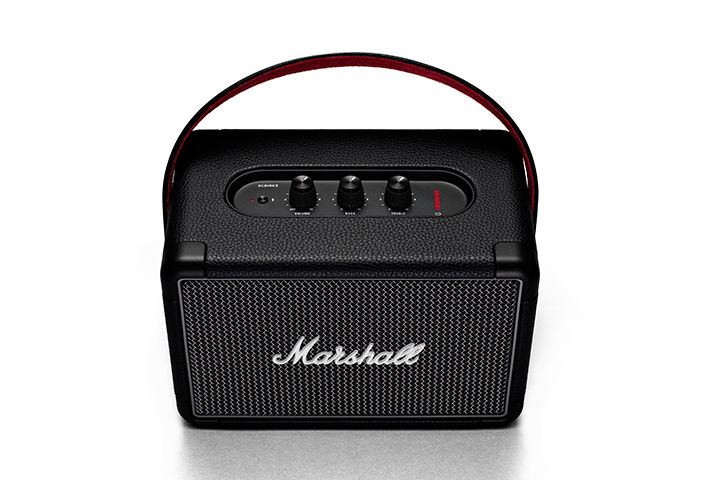
Another potential headliner for a marathon weekend is the Marshall Kilburn II ($299), the most compact option in a distinctive line of performance amp-styled cabinets. As if the metallic grille and immediately identifiable logo script don’t do enough to embody the longstanding live pedigree of the brand, the vinyl-clad speaker’s guitar-like startup/shutdown sounds nail home the point. But if it’s a tour-worthy speaker you’re looking for, you’d be hard-pressed to beat the 20-hour battery and tone-sculpting features of this road warrior.
The Kilburn II is around five pounds, but only IPX2 water-resistant (a light splash), so it does have environmental constraints compared to the Xtreme 2; the open bass reflex port on the back will tell you that. However, the reinforced corner caps and velvet-lined strap say it’s ready to anchor the right tailgate. And the throaty wailing of the small but mighty speaker wants you to crank your favorite blissed-out anthems and adrenalized ensembles.
Sporting Bluetooth 5.0 with aptX (allowing for a more reliable connection), as well as a 3.5mm aux in, the Kilburn II centers its full-range riffs around a pleasurably crunchy midrange. This can be heard in the filtered vocals and ducking, weaving synths of “Spaceship” (ft. Uffie) by Galantis. Want more hardened snap, glassier highs, or an endorphin-inducing growl? The Kilburn II sports three rotary dials: ON/OFF/VOLUME, TREBLE, and BASS, so you can crank it to dispatch sound design like the anxious complexity of neurofunk/techstep—think the aggressively shifting, percussive fury of “Anomaly” by Noisia.
Featuring one 20-watt woofer and both front- and back-firing 8-watt tweeters, allowing it to reach monstrous volume (and not break up until the very extreme), the Kilburn II radiates multidirectional prowess (though not the spherical stage of the ZIPP or MEGABOOM). There’s a great ratio of grit-to-groove in the Marshall tone, one that’s heard and felt equally in the chest. It’s an authoritative speaker that exudes vibe.
The Sunrise Set
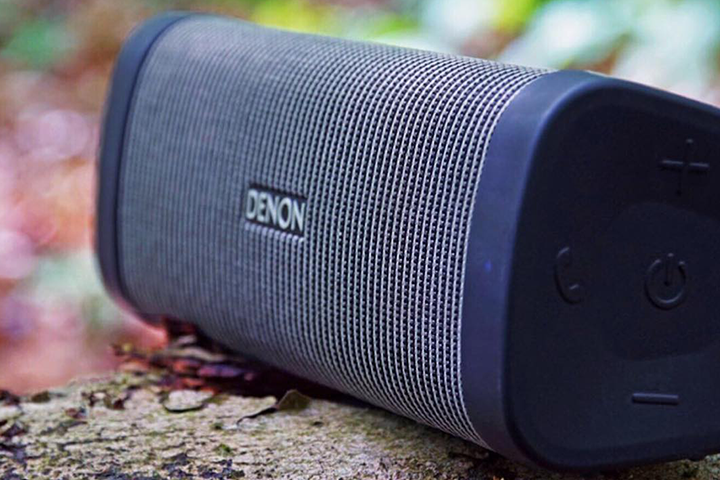
Turning it up to 11 can be a great time, but there can come a point when you want to dial down the intensity without losing the feeling. The impish Denon Envaya Mini ($149) makes an impression not by being forceful, but from how convincingly it renders tracks despite its size.
The Envaya Mini fits two 40mm full-range drivers and one 40x83mm passive radiator into a relatively diminutive, bar-shaped form factor. It’s a speaker that could be shoved in a back pocket, slipped into a bike’s water bottle cage, or even tossed across (or even safely into) a pool, as it’s not only light, but also IP67 dustproof/waterproof rated.
In this same tightly sealed package are all three major Bluetooth codecs: vanilla SBC, more upscale aptX, and the somewhat equivalent AAC—the latter being the preferred standard of iOS devices (surprisingly, the Envaya Mini is the only speaker in this list to support it). This ensures compatibility and an optimized connection with any device (and the superiority of AAC is apparently when listening to the sizzle of percussion—it just sounds less hissy and tinny). Battery life is around 11 hours. Basic controls are on the (relatively stiff) rubberized side panel.
Again, the Denon Envaya Mini is not visually striking. What is compelling is the articulation it manages. Facing directly, its presentation is measured, midrange-forward, yet never shouty. There is an expansive stereo image and sense of separation for the size of the speaker (which could be improved further by pairing two speakers as L/R). It can’t dig anywhere near as deep into tactile bass as the other speakers in this roundup (its $199 Envaya big brother edges closer), but it showcases texture effortlessly. Whether it’s the soulful future house or gangsta bass of the Tchami x Malaa equation, the Denon Envaya can reproduce both the breezier “Aurra”/“Shades” single and the more guttural swagger of the “Cash Money” drop.
Tasteful definition is the name of the game. For instance, the melodic flares of trance epic “Collider” by Eric Prydz benefits from the bite-free upper-mids/treble push, while a little thought to speaker placement (such as on a hard surface near a wall) can bring out more bass. The Envaya Mini is ultimately a speaker array for fans of balance and a surprising sense of scale.
The After-Hours
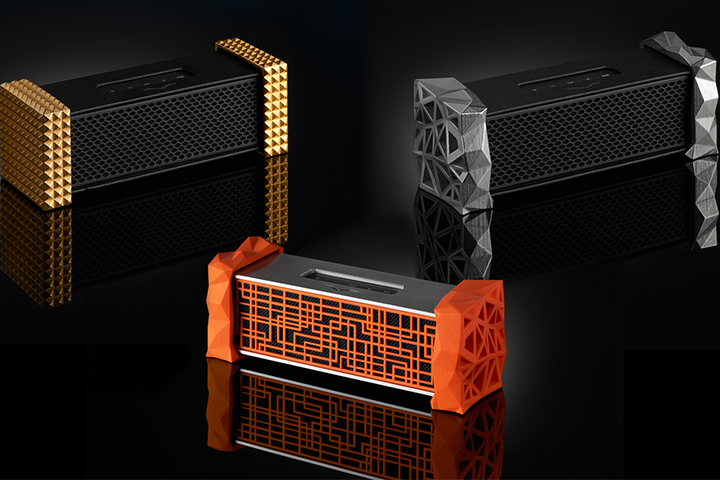
Also small in stature but on the opposite end of the spectrum from the Denon, the V-Moda REMIX ($199) features a shocking amount of thump within a customizable shell. Drawing on the brand’s heritage of both personalized products and club-friendly headphones (the Crossfade series has graced the skulls of dozens of DJ Mag’s Top 100), this comes as no surprise.
Lest you not realize how important custom-tailored components are to V-Moda’s identity, the name of the speaker nods to the ability to remix its look through (separately purchased) 3D-printed grilles, shells, and sides (available in precious metals that tally hundreds of thousands of dollars). V-Moda admits that draping the speaker in platinum and steel might affect its acoustic properties, so let’s just talk about the stock model.
Even in standard black vegan leather or silver aluminum, the boxy REMIX is still somewhat of a conversation piece. Many lightweight speakers of similar size are in some way curvy, designed in an attempt to be as omnidirectional as possible. The REMIX, however, performs best as a model-esque accessory, placed on a shelf or tabletop to be admired by the crowd. It has a 10-hour battery life, bread-and-butter SBC Bluetooth and no IPX rating, meaning it’s best used indoors (or when/where you know there are no chances of sudden showers). What will really get people talking, however, is the forceful, rubbery bass—an energy shared in the DNA of all V-Moda products.
The REMIX keeps things sultry and sumptuous when it’s time to get freq-y. Packing two 1.5-inch, full-range glass-fiber drivers and front/back 2.5-inch passive radiators, the REMIX rolls with the silky vocals, oversaturated basslines, and pinging chiptones of Snakehips’ low-ridin’ electro-funk tracks like “For the F^_^k of It” and yet can dig into the deep crevices of the scorched percussion, laser-etched synths, and swollen acid bass of Chris Lake and Green Velvet’s tech house percolator “Deceiver.” The bass isn’t as palpable as with the larger, rounder featured models, naturally, but the shimmer and sharpness of attack are admirable; the volume is perfect for more intimate gatherings and has to nearly top out (not recommended) for serious cracks to show.
Power, pairing, and multifunction buttons are on top, while around back, you’ll notice the future-proofed USB-C port for power, as well as 3.5mm AUX IN and VAMP ports. Here’s where the REMIX differentiates itself as a desktop/bedside companion, being the first portable speaker with an integrated headphone amplifier (rated at 83mW x 2, with output impedance of 12.8 ohms). Plug a source into the AUX IN and your favorite headphones into the VAMP, and the soundstage opens up on a concert for one, whether you fancy a few more punchy tracks or a luscious comedown.
Escape: Psycho Circus 2018 takes place Friday, October 26, and Saturday, October 27, at the NOS Events Center in San Bernardino, CA. Tickets are on sale now. For more information, visit the official website.
Follow Escape: Psycho Circus on Facebook | Twitter | Instagram



